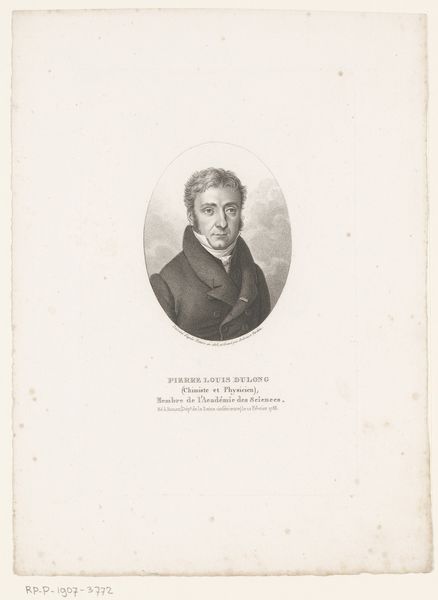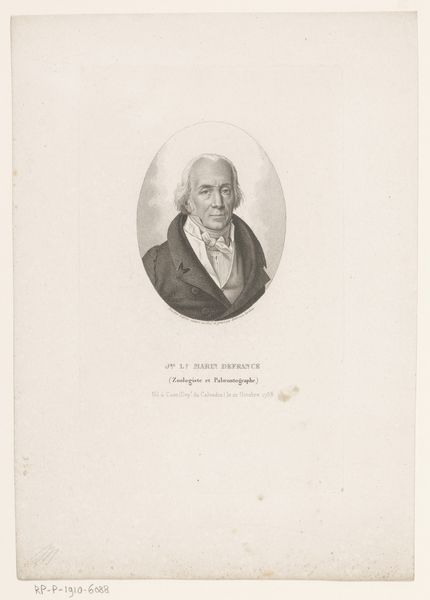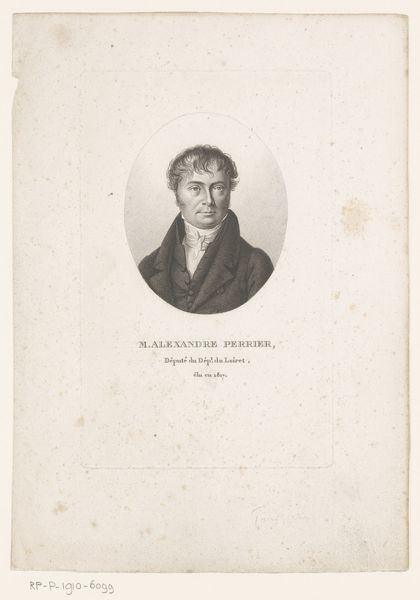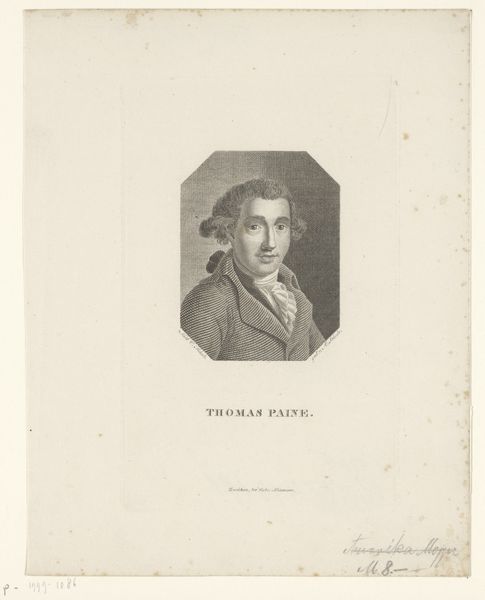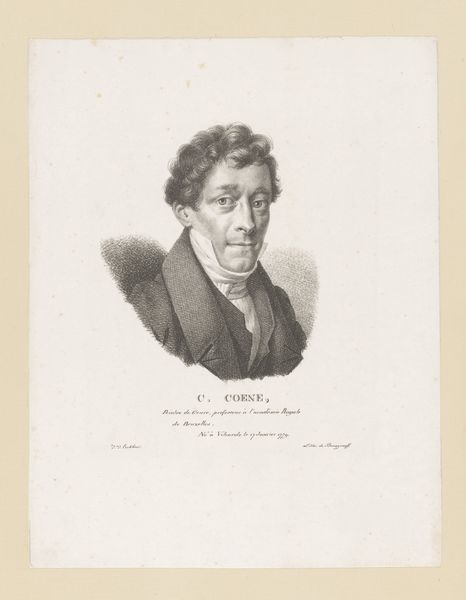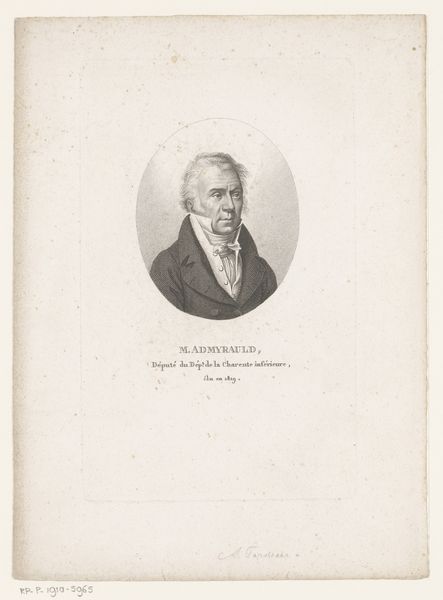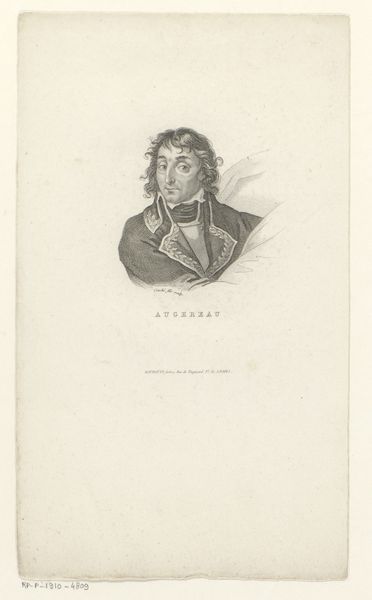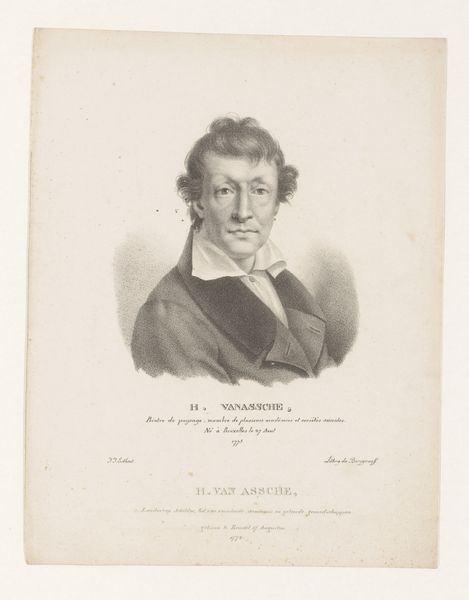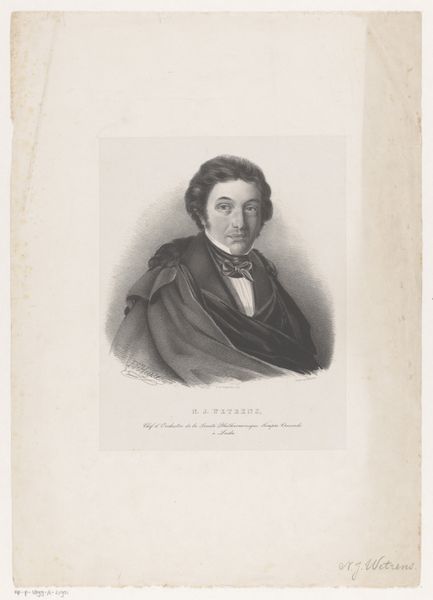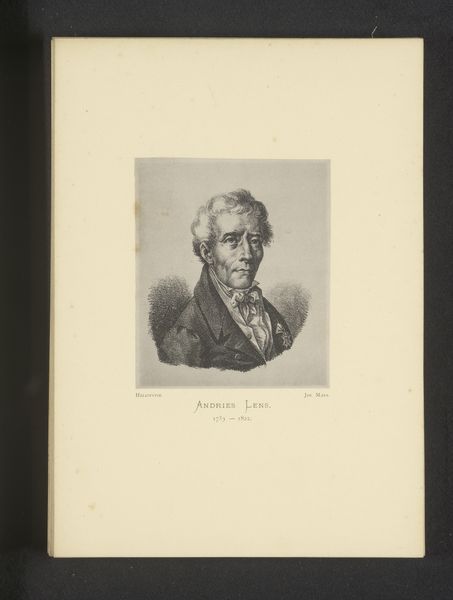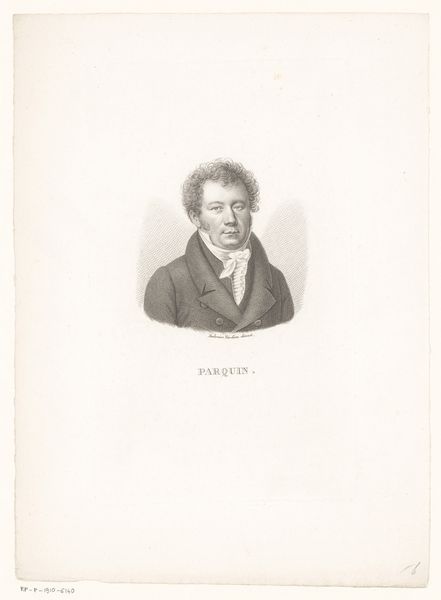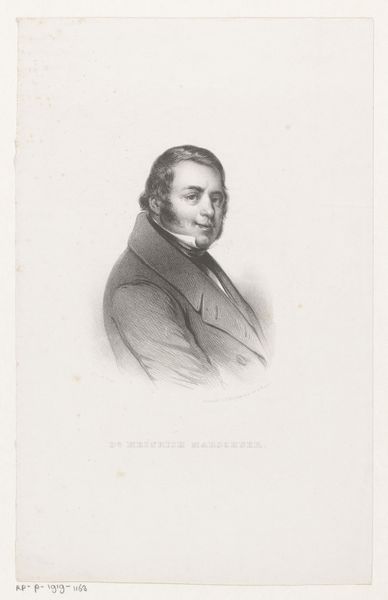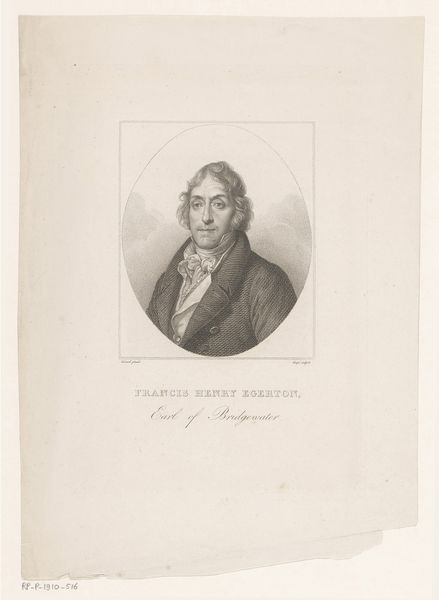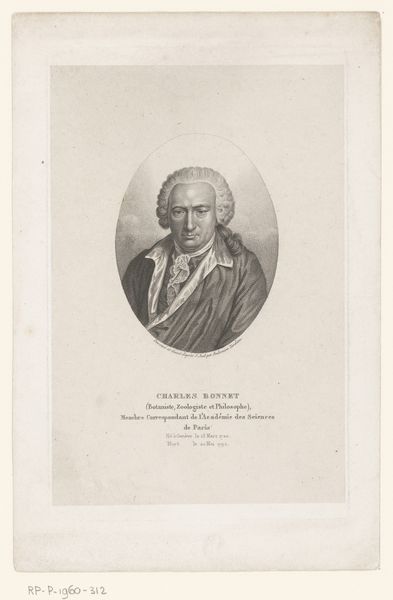
drawing, print, paper, graphite
#
portrait
#
pencil drawn
#
drawing
#
neoclacissism
# print
#
pencil sketch
#
paper
#
pencil drawing
#
graphite
#
pencil work
Dimensions: height 225 mm, width 140 mm
Copyright: Rijks Museum: Open Domain
Curator: We are looking at "Portrait of André Thouin," rendered in 1824 by Ambroise Tardieu. The artwork presents itself as a print, most likely derived from a graphite or pencil drawing on paper. What's your initial impression? Editor: Stark, but strangely lively. The limited palette emphasizes the stark contrast of light and shadow, which is intriguing in its rendering of Thouin’s face. The fine lines have a striking, textured effect that is amplified against the stark white background. Curator: Agreed. The portrait certainly conforms to Neoclassical principles of clarity and order. It seems to flatten the subject, containing him within that tight oval composition, and presents him in a rather detached way. But how does it speak to its context? Editor: André Thouin, as the inscription tells us, was an agronomist and professor. This image reinforces that status. Prints such as this were widely circulated, fostering a cult of personality around intellectual figures during the Restoration period. His membership to prestigious royal societies marks his position in this French cultural epoch. The relatively common choice of materials marks its popularity in the burgeoning print market as well. Curator: The use of line is compelling here. Notice how Tardieu’s masterful execution using a limited tonal range. Despite the constraints of printmaking, he suggests dimension, even volume in the face. Editor: Certainly, you can observe how Tardieu builds layers of hatching to form an illusion of three-dimensionality, giving shape to Thouin's somewhat asymmetrical face, or his almost untamed curls, restrained in the visual economy of this portrait. I’m also thinking about how this form of representation contributed to standardizing and disseminating knowledge, which reinforces my ideas regarding the political utility of art. Curator: An astute observation. It seems we find ourselves at an intersection between art as a socio-political tool, and art as an intellectual, visually satisfying pursuit. It speaks volumes about art’s multi-dimensionality. Editor: Indeed. Every artwork provides insight if we only bother to interrogate its forms of production.
Comments
No comments
Be the first to comment and join the conversation on the ultimate creative platform.
